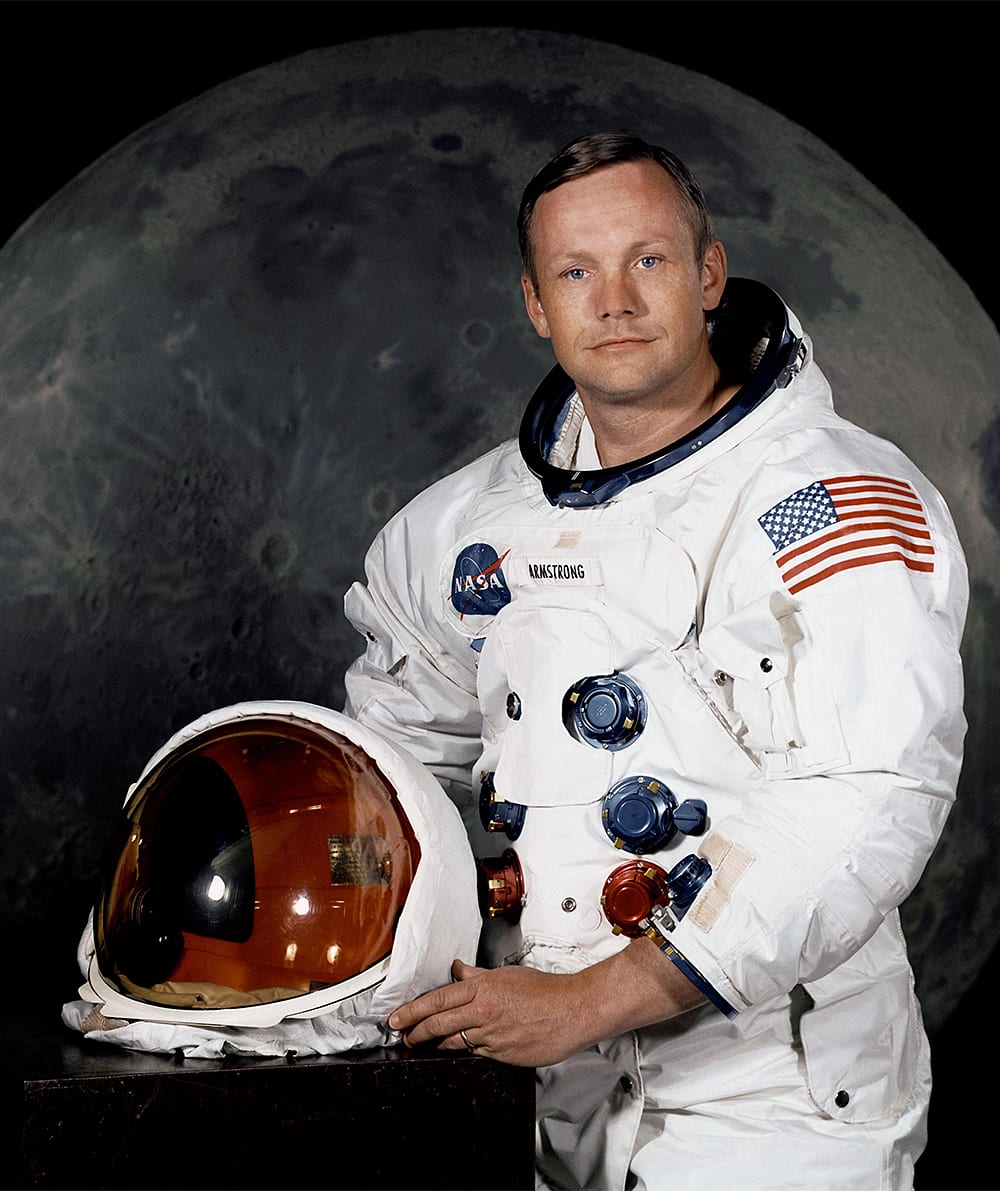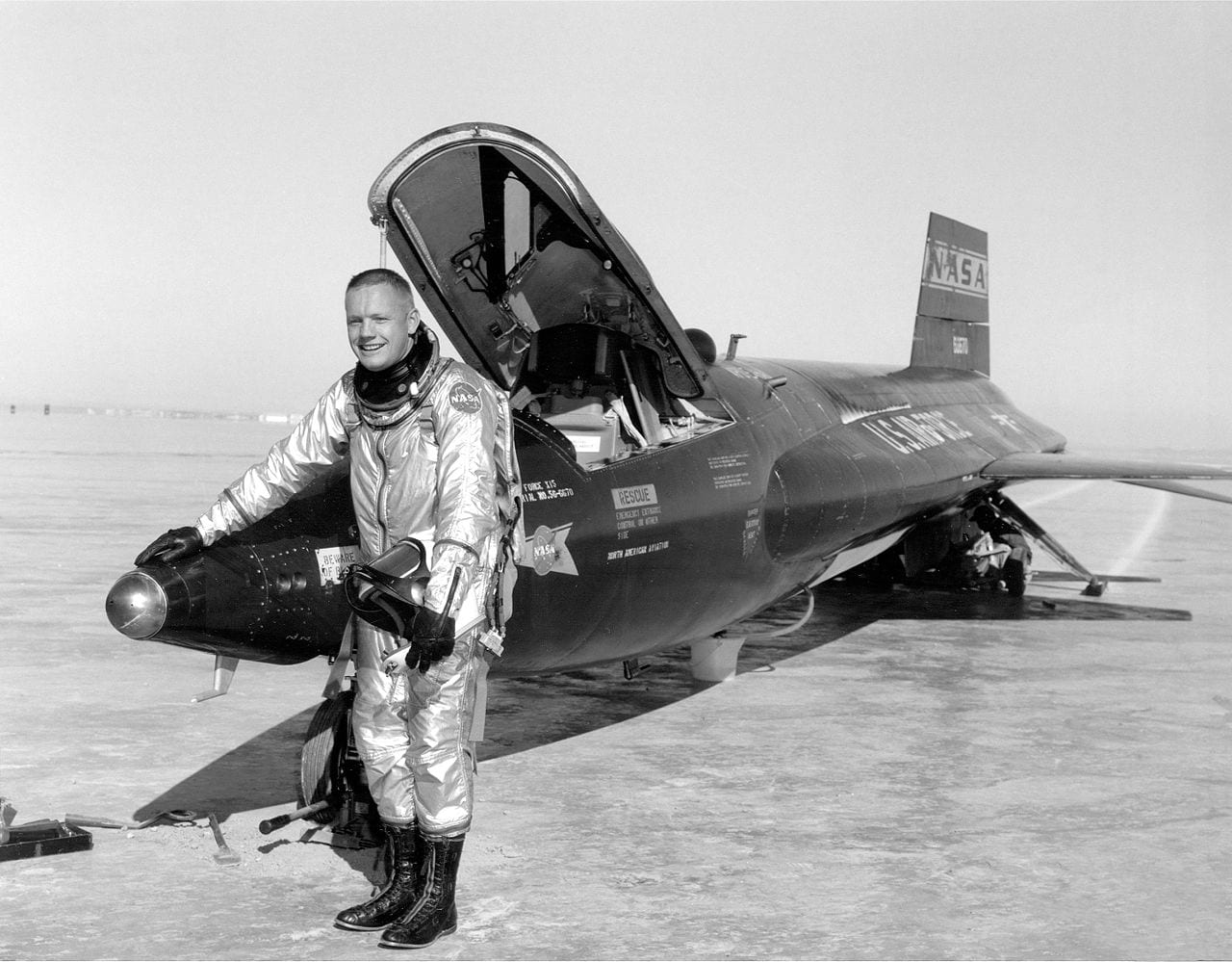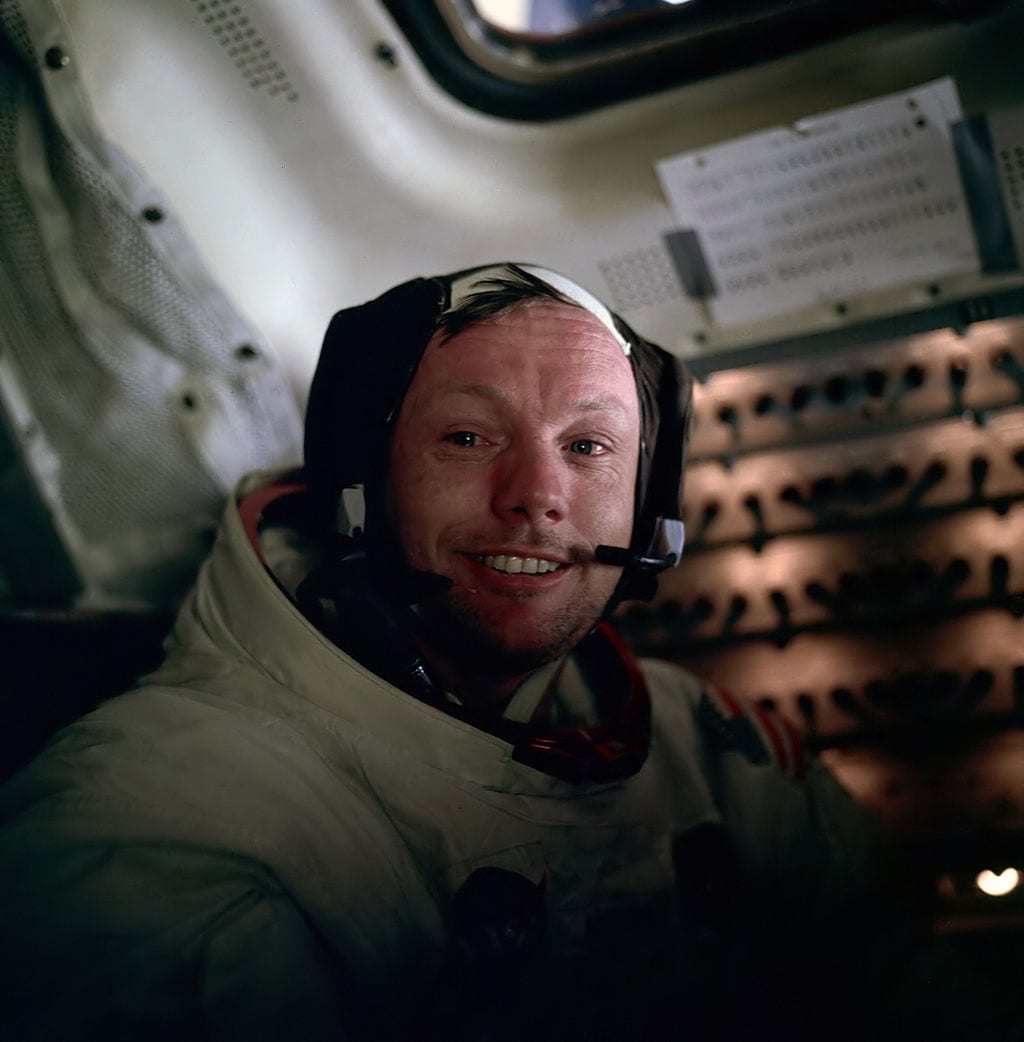Neil Armstrong
The man behind the name
Good Decisions
On July 20, 1969, Neil Armstrong became the first man to set foot on the moon, but his path to that historic moment was laid decades earlier as a young boy growing up in Ohio.
Armstrong was born August 5, 1930, during the golden age of air travel, and took his first airplane ride at age 5. This stimulated a lifelong love for flying, fueled by stories about the exploits of pilots during World War II. As a young boy, he built model airplanes and once constructed a wind tunnel in his basement to test his designs, early signs of resourcefulness and determination—traits that would serve him well throughout his career.
Armstrong’s interest in aeronautics and airplane design continued as he grew. At age 15, he earned his pilot's license and, after graduating from high school, he enrolled at Purdue University to study aeronautical engineering under a U.S. Navy scholarship. His studies were interrupted, however, when he was drafted into the Korean War, where he applied his skills as a pilot to what many consider the ultimate test of an aviator: combat missions from an aircraft carrier. By age 22, he had flown 78 missions, many of them from the USS Essex. It was during those missions, including one on which he lost more than six feet of his right wing to anti-aircraft cables, that Armstrong proved that he could make good decisions under pressure.
Following the war, Armstrong returned to Purdue and met his future wife, Janet. The two were married in 1956 and later gave birth to three children: sons Eric and Mark and a daughter, Karen, who died of an inoperable brain tumor at age 2.
Still grieving from their loss, Armstrong and his family relocated to Edward’s Air Force Base in California so he could serve as a Naval test pilot, a challenge that helped him hone his flight skills. As a test pilot, Armstrong flew more than 200 types of aircraft, including the X-15, which he once flew outside the atmosphere and needed all his skill as a pilot to bring back under control and return safely to Earth.
By the early 1960s, the Space Race between the U.S. and the Soviet Union was in full swing, bringing with it opportunities for talented pilots to test their skills in a place few had ventured. Armstrong was part of the group selected to achieve the goal laid out by President Kennedy in his 1961 speech before Congress of "landing a man on the moon and returning him safely to the Earth."
As a part of Project Gemini, a precursor to Apollo, Armstrong and his fellow astronauts helped develop and test the equipment and techniques that would be needed to send a manned capsule from Earth to the surface of the moon and back. As the crew of Gemini 8, Armstrong and his colleague David Scott performed the first successful ship-to-ship docking in space. This success nearly ended in disaster, however, when the Gemini capsule and Agena vehicle to which it was docked began spinning out of control. Armstrong calmly disengaged the two spacecraft, regained control using his ship’s reentry thrusters, and brought it home safely.
In 1969, Armstrong flew as commander of Apollo 11, an 8-day mission taking him, along with fellow crewmembers Buzz Aldrin and Michael Collins, to the moon and back. Collins remained in orbit aboard the Columbia command module while Aldrin and Armstrong descended to the surface in the lunar module, Eagle. With time and fuel running out and no suitable landing place in sight, Armstrong took control of Eagle and guided it to the ground. Four hours later, Armstrong stepped off the ladder of Eagle, pressed his boot into the lunar dust, and uttered his famous words: “That's one small step for man, one giant leap for mankind.”
From that point, Armstrong and Aldrin became celebrities and toured the world as international ambassadors. Although Armstrong was graceful in the spotlight, months of travel and social engagements eventually took its toll and he grew tired of being in the public eye. In 1971, he retired to become a professor of aeronautical engineering at the University of Cincinnati and, later, a spokesman for the National Commission on Space, whose 1986 report laid out a comprehensive plan for future U.S. spaceflight.
Armstrong married his second wife, Carol, in 1994 and passed away on August 25, 2012 just after his 82nd birthday. Across the span of his life, from his early interest in model airplanes to the moment he calmly landed man on the moon for the first time, Armstrong is remembered by most for his singular achievements in the air and beyond. But those who knew him well often see beyond those accomplishments to, as his colleague on Apollo 11, Michael Collins, remembered, "Good decisions all the way."



